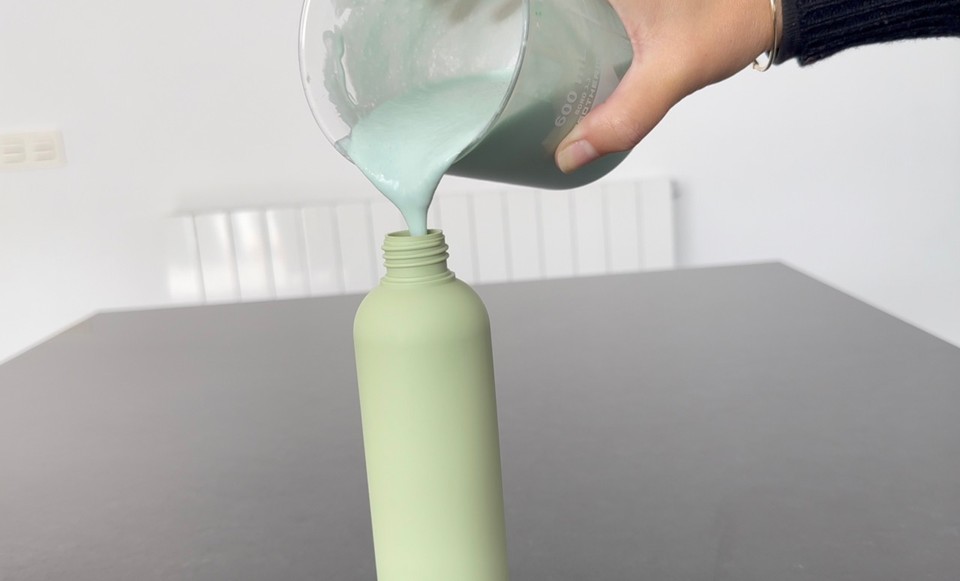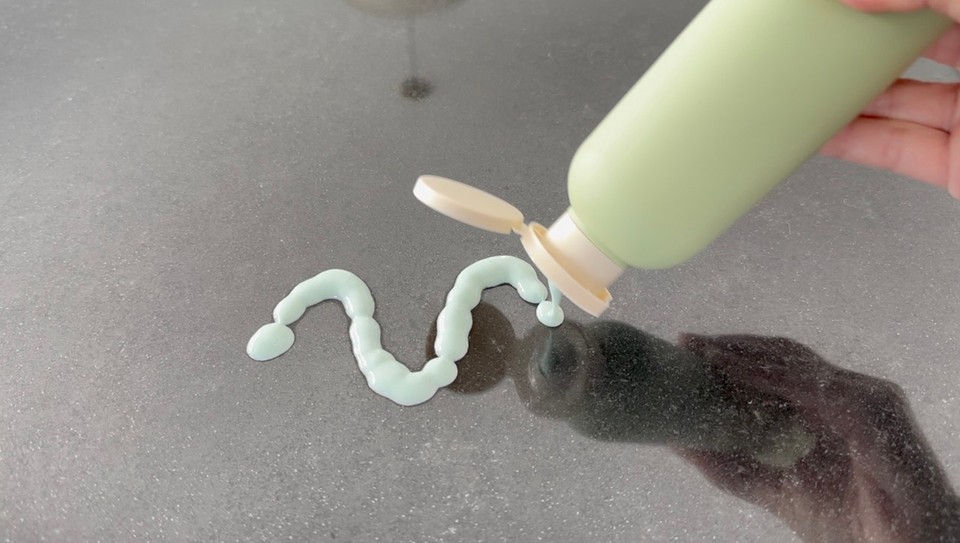Leave-In Conditioner (No BTMS)
| Phase | Ingredient | Percent (%) | Weight (g) |
|---|---|---|---|
| Phase A | Xanthan gum | 0.3 | 0.3 |
| Glycerin | 2 | 2 | |
| Distilled water | 74 | 74 | |
| Sucrose stearate | 4 | 4 | |
| Phase B | Cetyl alcohol | 5.4 | 5.4 |
| Silybum marianum seed oil | 3 | 3 | |
| Coco caprylate | 4 | 4 | |
| Phase C | Preservative Cosgard (INCI - Benzyl Alcohol, Dehydroacetic Acid, Aqua) | 0.8 | 0.8 |
| Fragrance oil | 1 | 1 | |
| Hydrolysed wheat protein | 2 | 2 | |
| Sodium lactate | 2 | 2 | |
| Panthenol | 1.5 | 1.5 |
*** Optional: mica color
What is a leave-in conditioner?
Leave-in conditioners are products that hydrate and moisturize the hair. Hair conditioners are left in without rinsing them from the hair. Leave-in conditioners can help style the hair by providing a light hold or texture.
This formula is for a medium-consistency leave-in conditioner. This formula can be placed in a pump bottle for easy application.
The color is optional to give the product a more vibrant appearance. You can skip the color, and your final product will be milky white colored.
You can help support my website and channel through the “buy me a coffee” page.
Here is the link: https://www.buymeacoffee.com/diycosmetica
Your support helps me keep sharing here more information and more formulas.

In phase A, I combine gum and glycerin. The gum helps to stabilize the final product. To the slurry (gum plus glycerin), I added the distilled water and my emulsifying wax, sucrose stearate.
Sucrose stearate will disperse after heating the water phase.
I used sucrose stearate because it can give the final product a very light texture and consistency. If you use a waxy emulsifying wax, you might get a product too thick, which is much less applicable as a leave-in conditioner.
The leave-in conditioner should have a light and fluid consistency, and sucrose stearate is a versatile emulsifier that can have the fluid texture we look for in this product.
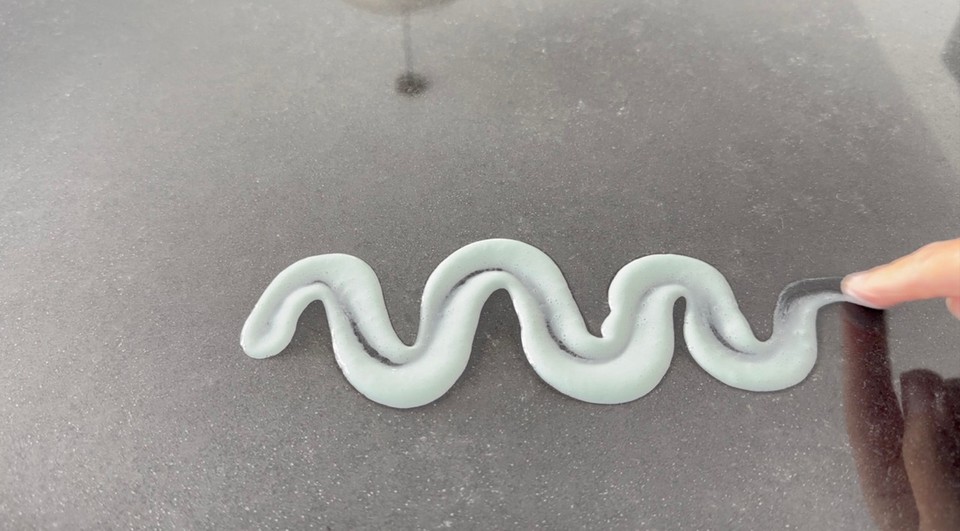
You can get different textures with sucrose stearate, such as a medium consistency in this unscented face cream or a thicker consistency in this face exfoliate cleanser.
When using sucrose stearate, you need to use a high-speed blender to fully emulsify the water-based ingredients with the oil-based ingredients. You need to emulsify for a good few minutes to ensure the final product is stable and fully emulsified.
Phase B, the oil phase, contains three ingredients. The first ingredient is cetyl alcohol. This ingredient is the primary conditioning agent in this leave-in conditioner. Cetyl alcohol is an emollient, which means it helps to soften and smooth the hair and provides slip to the hair, making it easier to detangle it.
Next, I used Silybum marianum seed oil. Silybum marianum seed oil, commonly referred to as milk thistle seed oil, is a natural plant-derived oil extracted from the seeds of the milk thistle plant. This oil is rich in antioxidants and essential fatty acids.

Milk thistle seed oil offers hydration, effectively retaining moisture, making it well-suited for dry or damaged hair. Its essential fatty acids nourish hair, enhancing its overall health and appearance possibly reinforcing the hair shaft. Additionally, the antioxidants in the oil offer protection against environmental stressors like UV radiation and pollution. This oil is frequently included in products tailored for color-treated hair due to its potential to prolong hair color vibrancy and deter fading.
Other oils you can use to replace the Milk thistle seed oil are Argan oil, fractionated coconut oil, Broccoli seed oil, Jojoba oil or Grapeseed oil.

The third ingredient in phase B is Coco caprylate, also known as caprylyl caprylate/caprate. It is derived from natural sources, primarily coconut oil and caprylic acid.
Coco-caprylate plays a role in hair hydration, resulting in softer and more manageable hair. This emollient assists with hair detangling, facilitating easier combing or brushing without causing breakage. It also contributes to the hair's shine and vibrancy, promoting a healthier appearance. Furthermore, as a lightweight ingredient, coco-caprylate is suitable for diverse hair types, including fine and oily. It lends a luxurious and silky texture to hair conditioners, enhancing their overall feel and performance.
You can use fractionated coconut oil to swap the coco caprylate with a light oil.

Next is phase C. In phase C, I added some active ingredients. I used Hydrolysed wheat protein and Panthenol together with sodium lactate.
Hydrolyzed wheat protein (derived from wheat and has been hydrolyzed, meaning it has undergone a process that breaks down the protein into smaller fragments) has a low molecular weight, allowing it to penetrate the hair shaft and strengthen it from within.
Hydrolyzed wheat protein can bind to hair moisture, helping keep it hydrated and adding shine to the hair.
You can use Hydrolyzed silk protein, Rice protein or Hydrolyzed Quinoa Protein to replace it.
Panthenol, also known as provitamin B5, is a powerful humectant, attracting and retaining moisture. It helps keep the hair hydrated.
Panthenol enhances hair softness and flexibility, making it easier to style and manage. It also strengthens hair, improving elasticity and reducing the risk of breakage and split ends.
You can swap the Panthenol with glycerin if you can't get Panthenol.
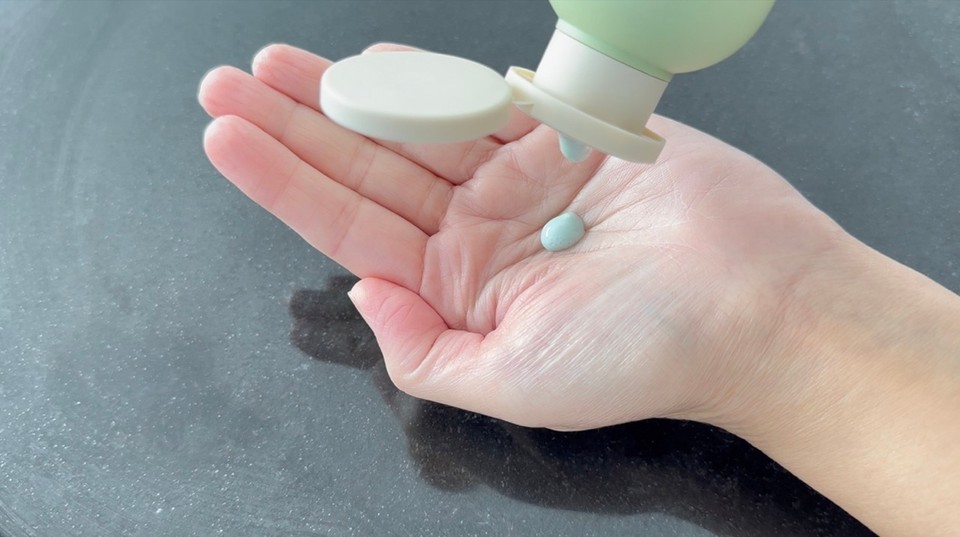
Sodium lactate is a natural humectant. It can aid in the detangling process by reducing friction between hair strands. Through its ability to enhance hair moisture and texture, sodium lactate can effectively reduce frizz, leaving the hair smoother and easier to manage.
You can use glycerin or sorbitol to replace the sodium lactate.
As for the preservative, if you use a different kind, you need to use it according to the supplier's instructions. You can subtract the difference from the distilled water if you need to use a higher percentage of the preservative.
You can use any fragrance oil you like. I have used melon fragrance oil, which has a fresh, fruity, and sweet aroma, which goes nicely with the color I chose for this product.
Always use the usage rate recommended by the supplier when using fragrance oils.
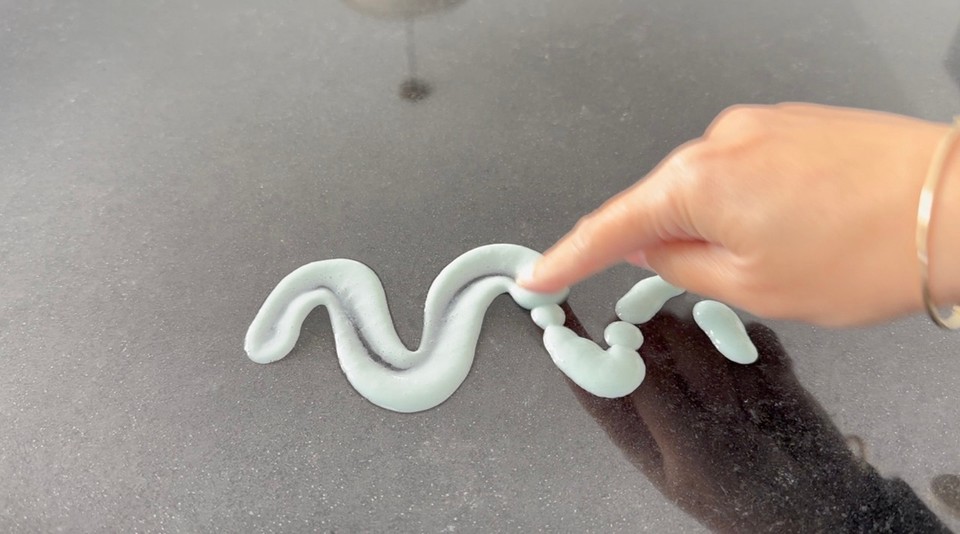
The final PH of the product should be 5. I used a few drops of lactic acid to lower the PH. Please check this post here to read more about PH adjustments in cosmetics.
The easiest way to use this leave-in conditioner is by placing the product in a pump bottle and using one pump on moist hair (mainly the ends). While making this product, I didn't have a pump bottle, so I used a flip-cover bottle instead.
Remember, a little amount goes a long way. Use a small amount of the leave-in conditioner; too much can be heavy on the hair.
Use the calculator to adjust the amount you wish to make.
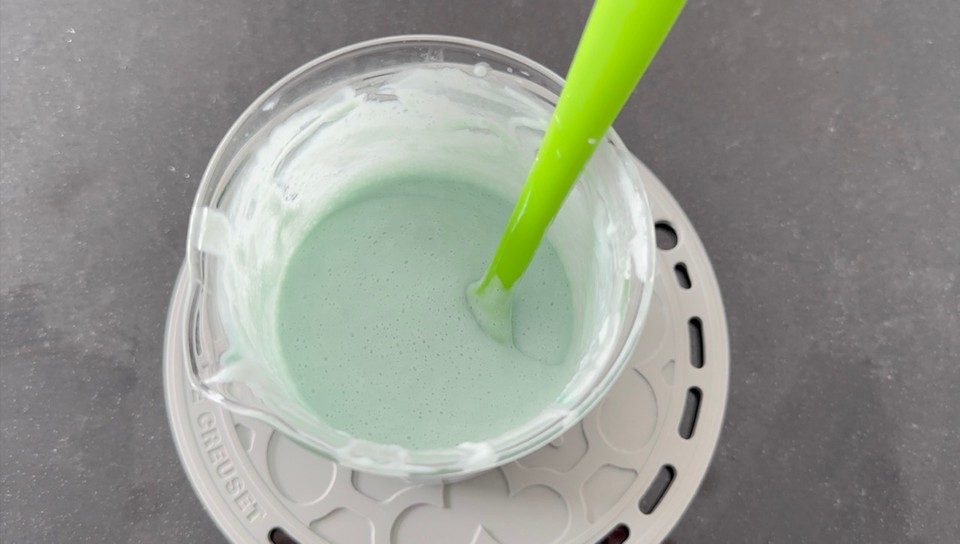
Method:
- In a heat-resistant beaker, add the water phase ingredients. Start with the gum and glycerin. Make a slurry by combining the glycerin and the gum, then add the distilled water and the Sucrose stearate.
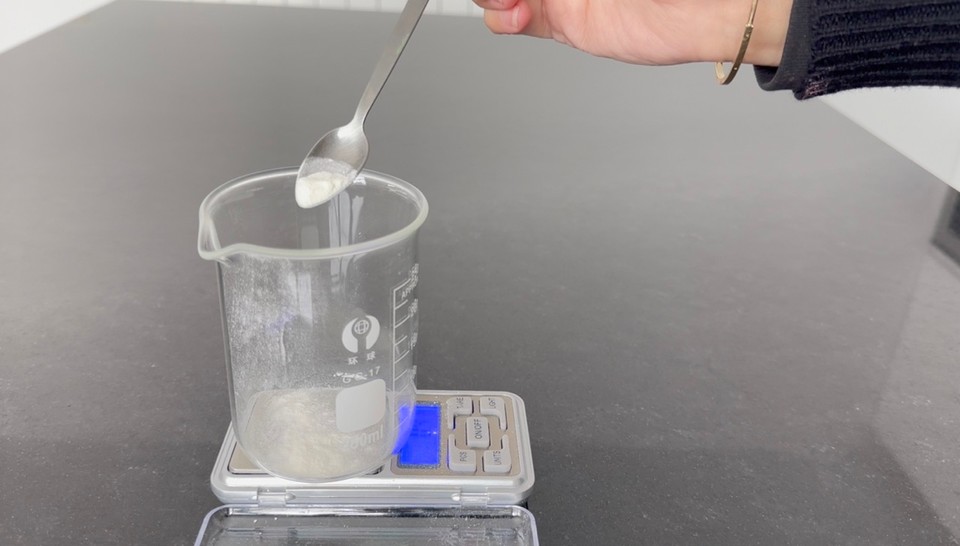
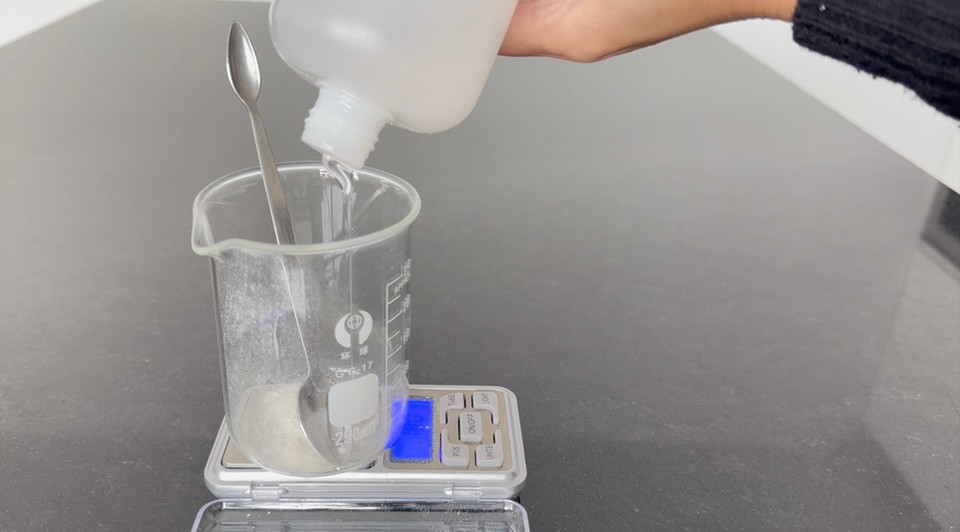
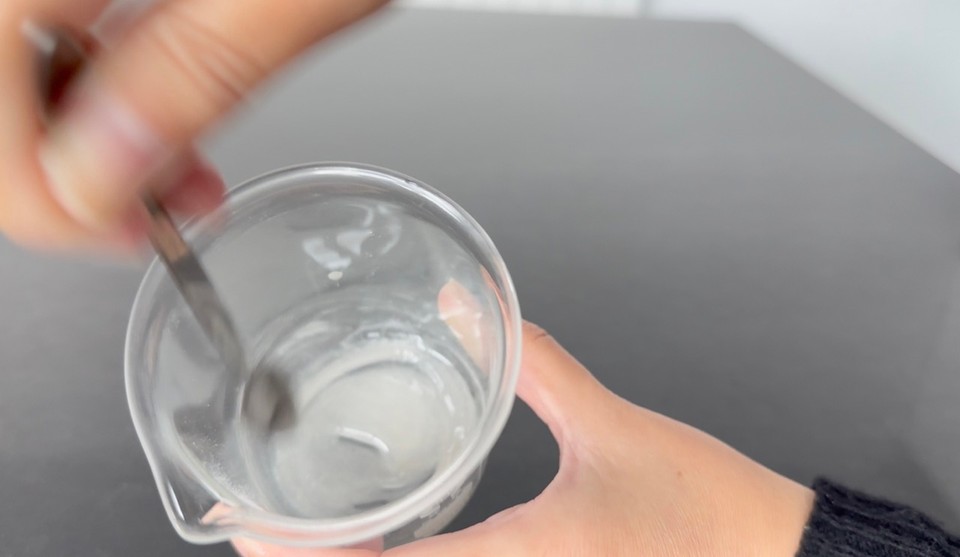
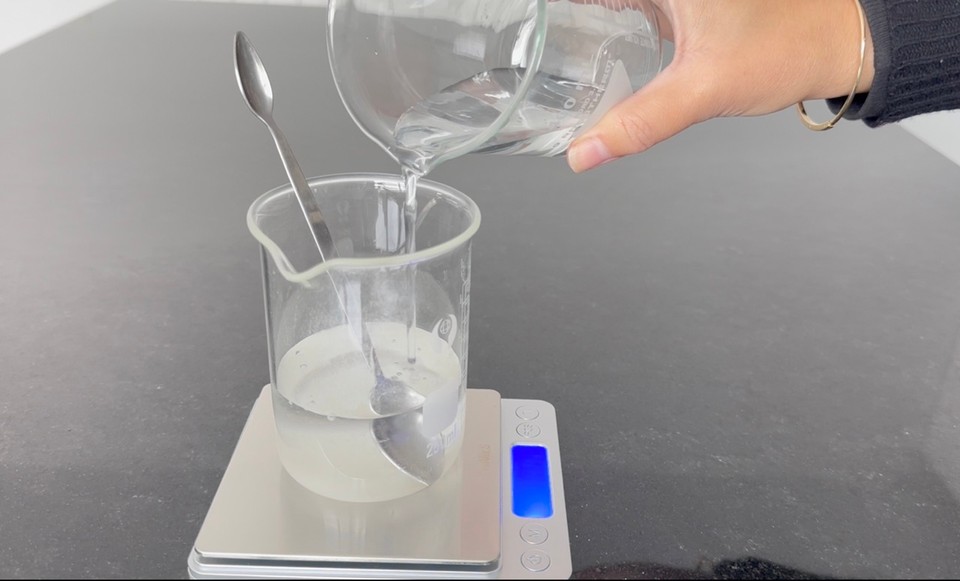
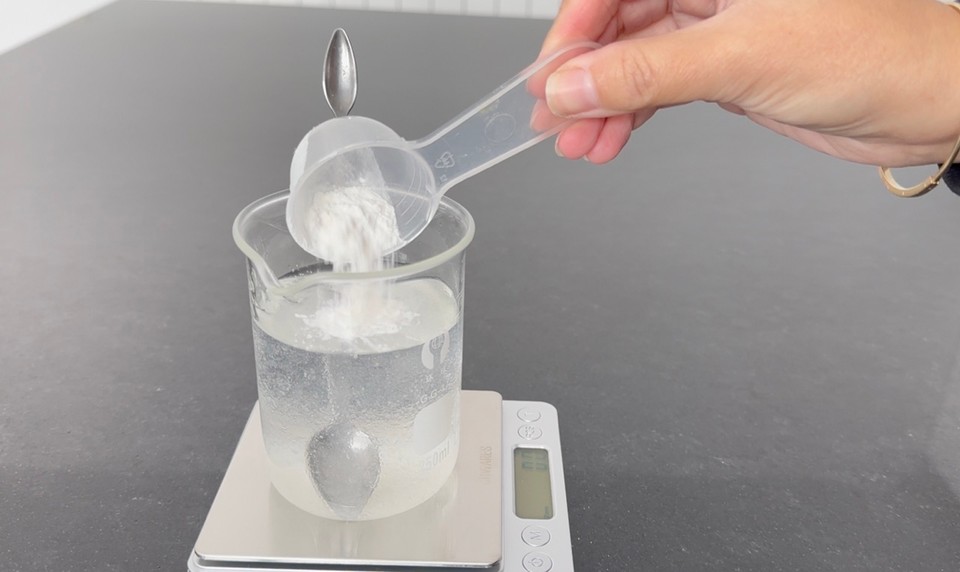
- In another heat-resistant beaker, add the oil phase ingredients.
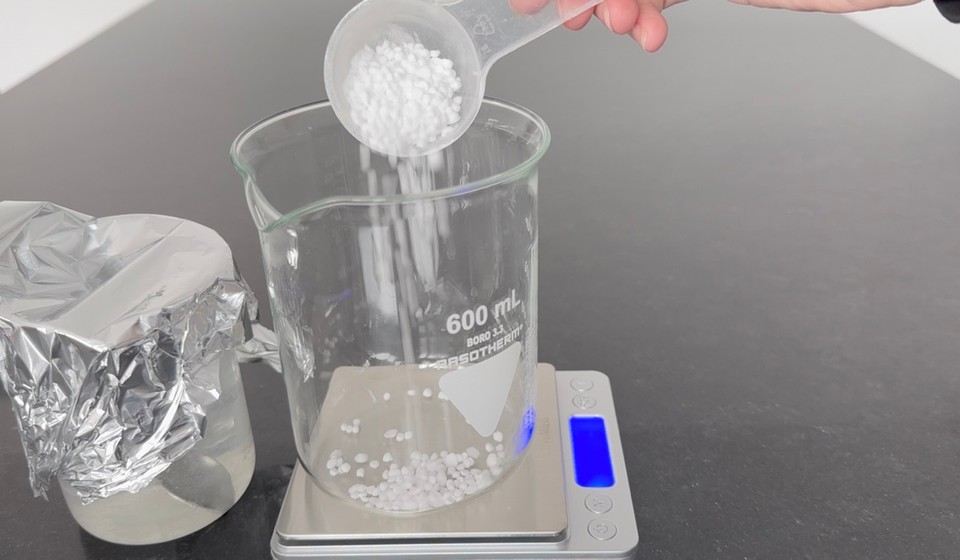
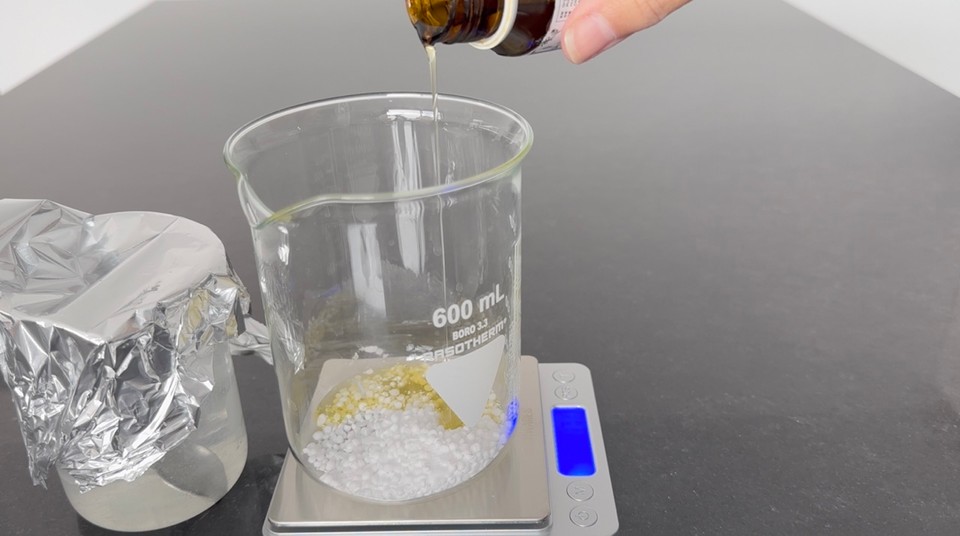
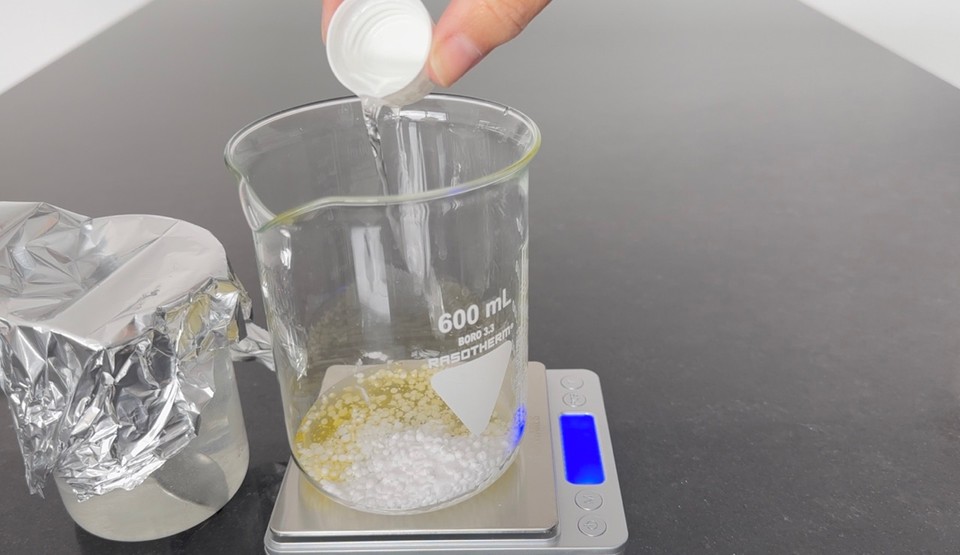
- Place the oil and water phases into a double boiler on medium heat to melt the oil phase. Cover the water phase beaker with aluminum foil to minimize water evaporation. (When working with bigger batches, scale your water phase before heating it and removing it from the heat. Calculate the water evaporated during the heating and add the missing amount to the water phase beaker).
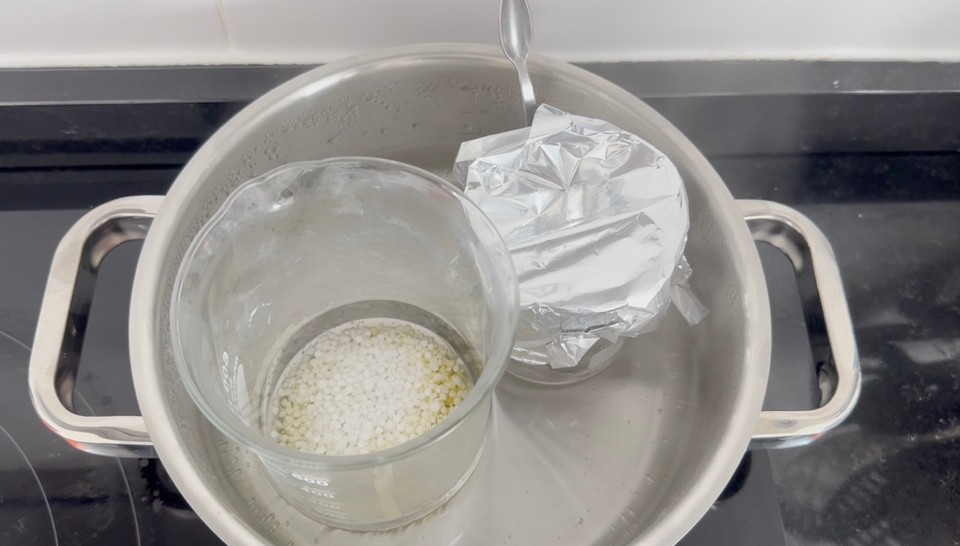
- Prepare phase C in a different container, mix to dissolve the powder, and set it aside.
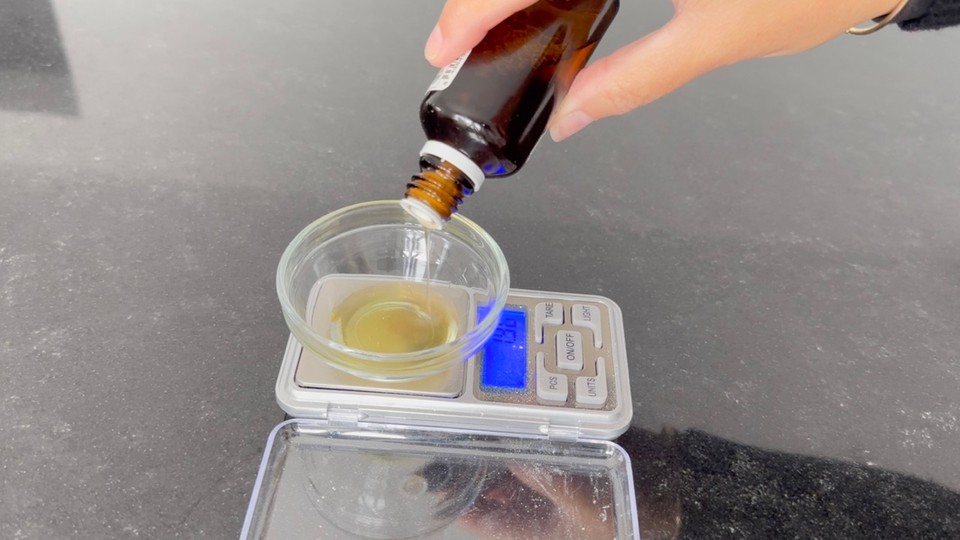
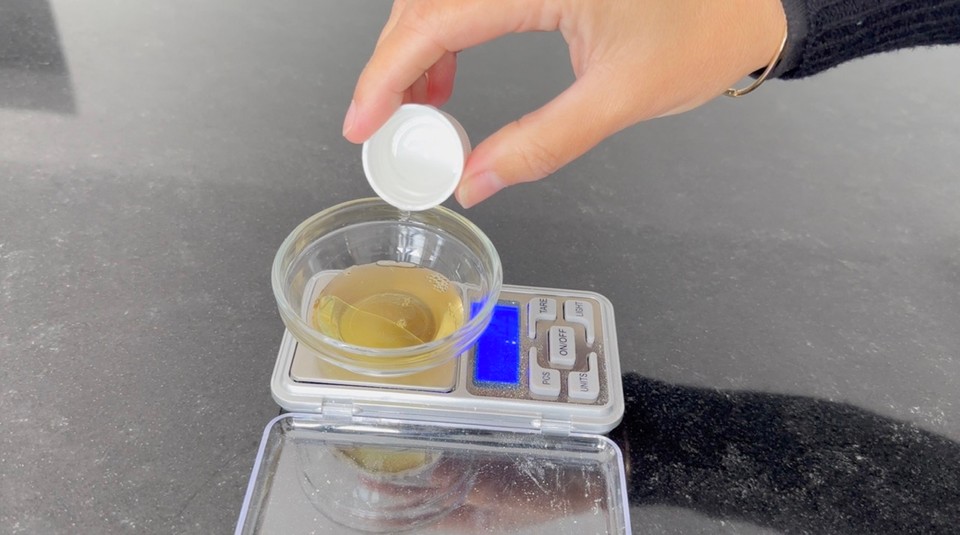
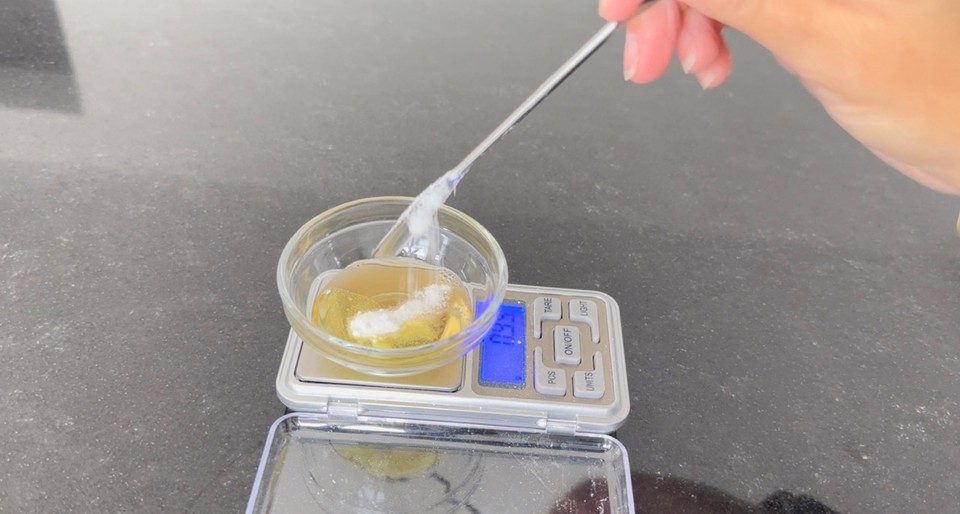
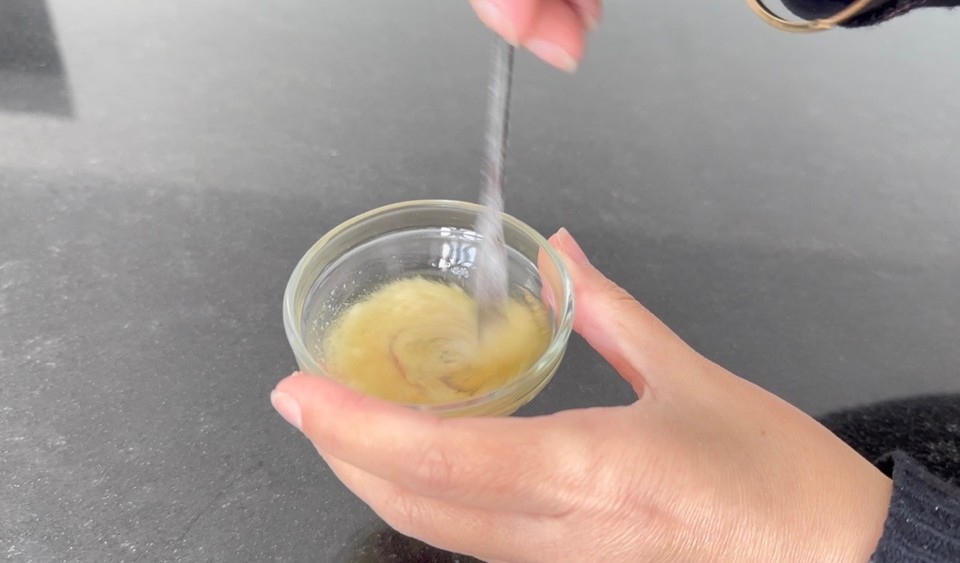
- Remove phases A and B from the heat. Combine phases A and B. Use a high-speed immersion blender for 3-4 minutes to combine a stable emulsion.


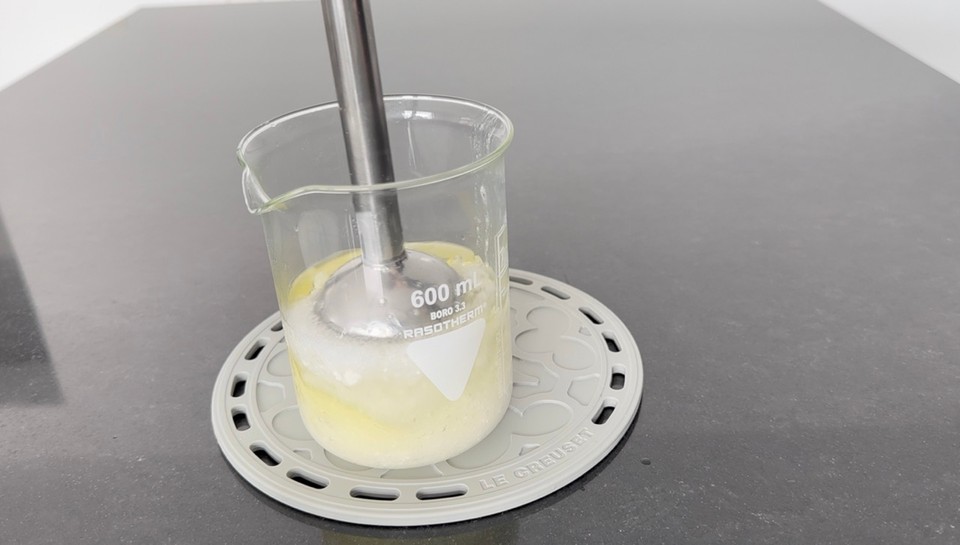

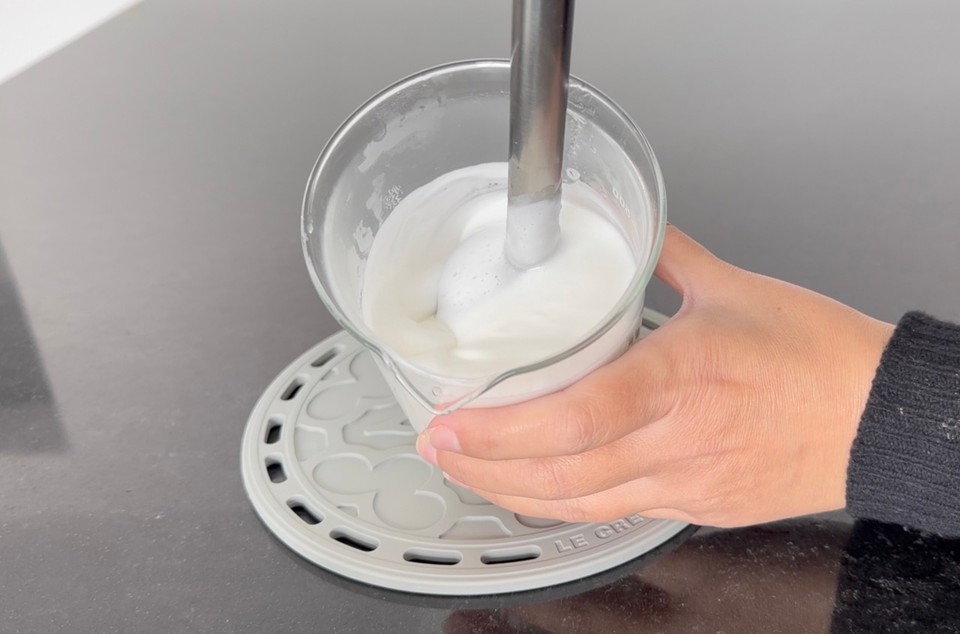
- Add phase C and mix well to combine when the emulsion cools to less than 40 degrees Celsius. If you want to add color, add it here and mix to incorporate the color to the emulsion.
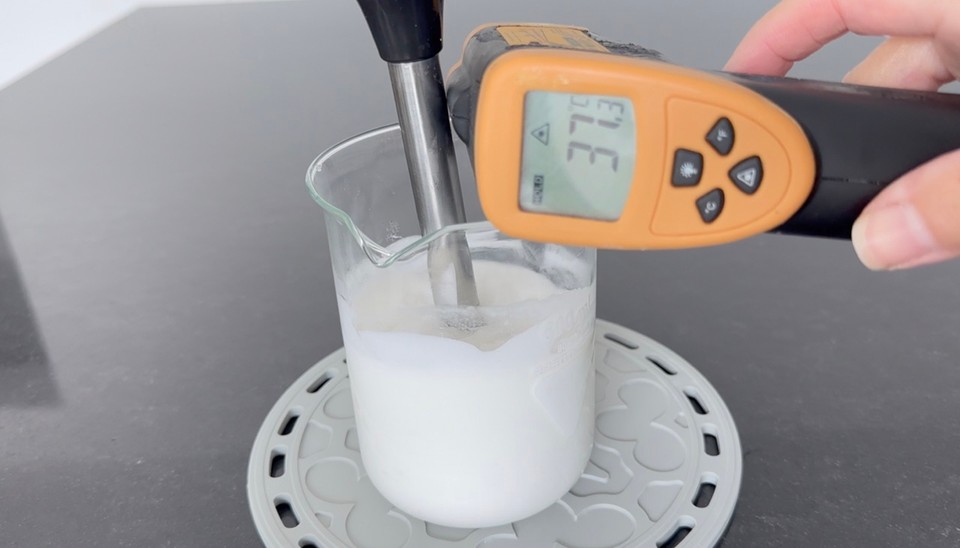
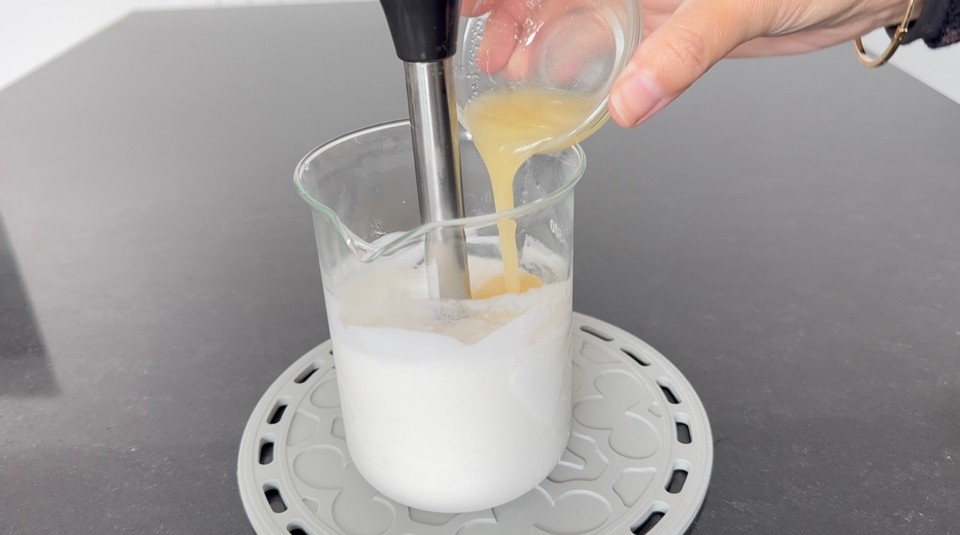
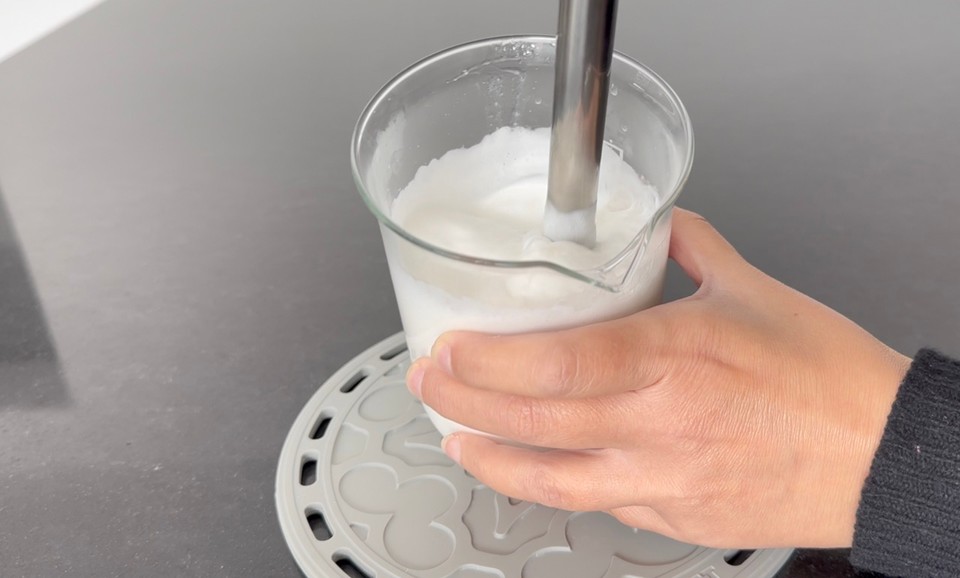
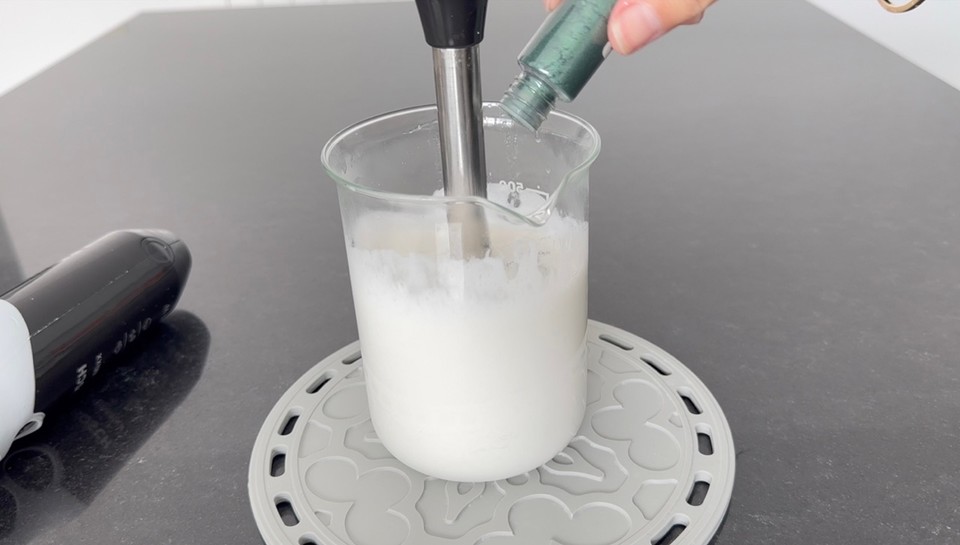

- Check PH level and adjust if necessary. To read more about PH adjustments in cosmetics, check this post. PH should be 5 in the final product. I added a few drops of lactic acid, an 80% solution, to lower the pH to 5.
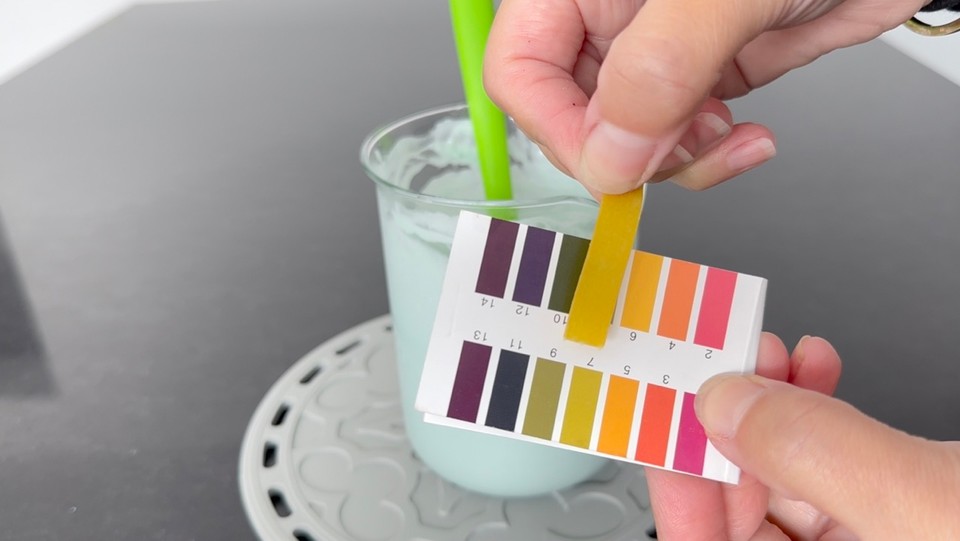


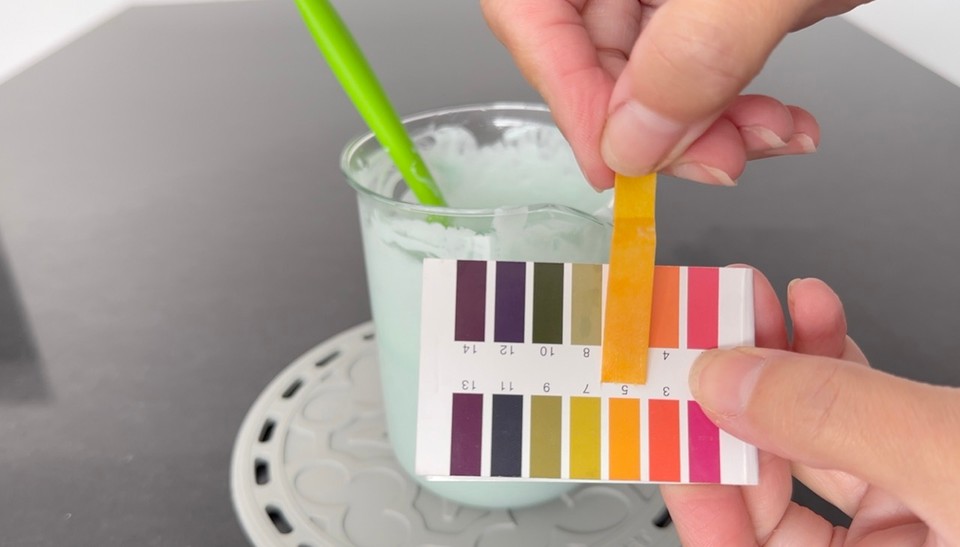

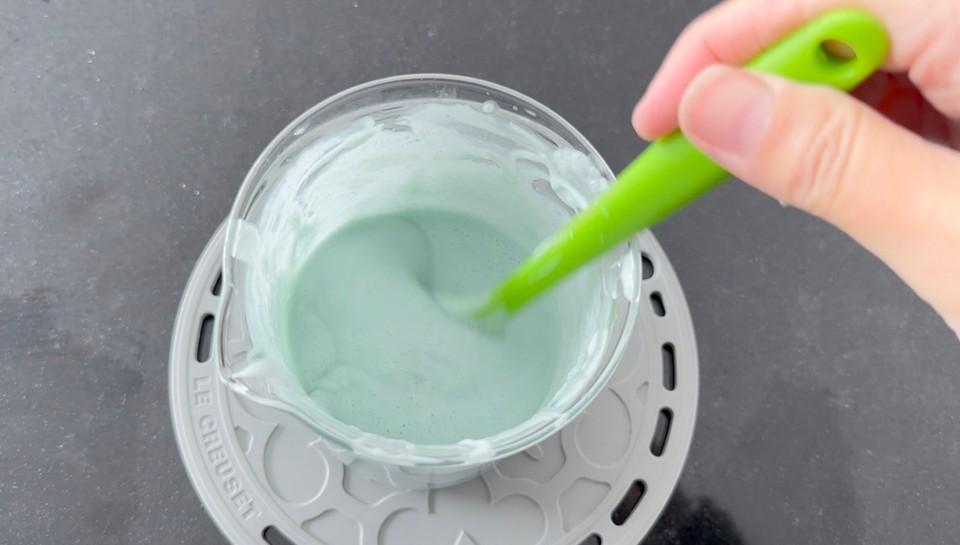

- Pour into the container of choice.
